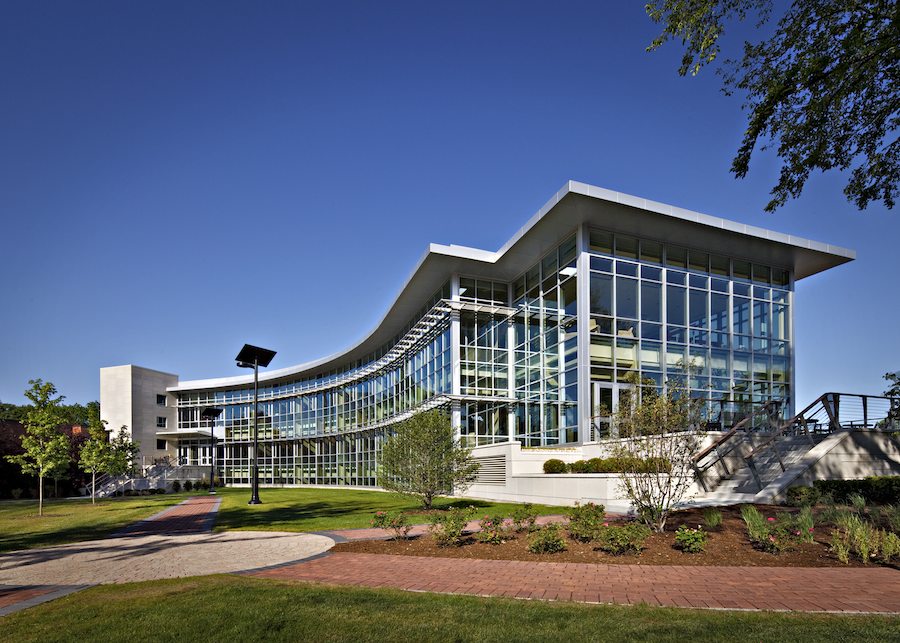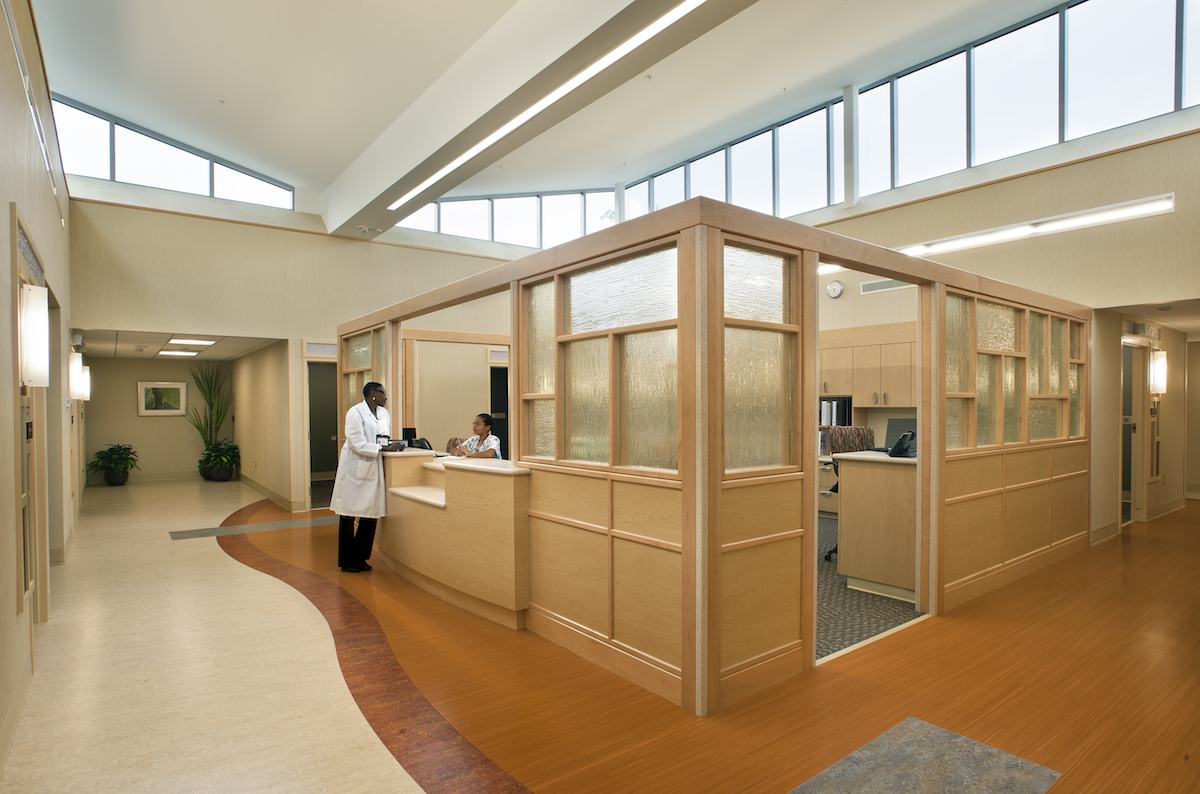
The latest—and largest to date—release of data from LEED-certified buildings shows that LEED buildings are strong energy performers. However, lack of granularity in the data release by the U.S. Green Building Council (USGBC) doesn’t reveal much more than that, possibly due to sidestepping of LEED 2009’s required energy reporting.
A snippet of LEED in Motion
The data was reported during USGBC’s Greenbuild conference in November 2013 as part of its report LEED in Motion: Impacts and Innovation. Drawing from LEED projects that reported data over the 12-month period between July 2012 and July 2013, the report offers two main data points relative to energy performance:
- On a simple average (not weighted by size) 450 LEED projects showed an average source energy use intensity (EUI) 31% lower than the national median source EUI.
- 404 LEED projects posted an average Energy Star score of 85.
Good news—on the surface
While the news is good on the surface (with the Energy Star score indicating average performance better than 85% of buildings nationwide, and well beyond the score of 75 needed for Energy Star certification), the report does not provide several data points crucial to a deeper evaluation of performance of LEED buildings. Building type, date of construction, square footage, or choice of LEED rating system do not accompany the data.
In addition, the report does not discuss median versus mean energy scores, a distinction that could be significant if there is a large variation in the energy data (debate over the significance of this statistical nuance was a point of controversy with USGBC’s last major data release, which was made in 2008 in conjunction with the New Buildings Institute).
According to the report, 1,861 LEED-certified projects were compliant with LEED’s mandatory energy reporting requirement (Minimum Program Requirement #6, or MPR6) during the reporting period, but only 450 provided an EUI through Energy Star’s Portfolio Manager.
Numbers “not spectacular”
Brendan Owens, vice president of technical development for USGBC, told me he considered the Energy Star average of 85 “okay—not spectacular.” He also said that the source EUI number behind the 31% reduction is 158 kBtu/ft2∙year, which he called “a number I’m not enamored by. We have a lot of 18-wheelers in our fleet mix,” arguing that LEED-certified building stock includes disproportionately more energy-intensive building types like healthcare facilities and data centers than the national average. (For context, see “Measuring Energy Use in Buildings.” The national average source EUI for office buildings is 166, with healthcare and food service averages being much higher, and residential lower. Note that site EUI figures, as used in the 2030 Challenge, are smaller numbers.)
Owens expressed some disappointment about the number of buildings reporting data but defended USGBC’s approach. The industry was initially resistant to the reporting requirement when it was introduced in 2009 (see “All LEED Projects to Provide Actual Performance Data”), and Owens acknowledges that USGBC didn’t hit the ground running with clear reporting protocols. He says that USGBC has been “getting a pretty good mix of utility bills, spreadsheets, and access to [Energy Star] Portfolio Manager accounts, but there is some degree of data inconsistency that we’re concerned about.”
“Part of it is that we didn’t require utility meters,” says Owens. It’s an added cost to install a meter on a campus building or commercial interior space that might not normally have one, and MPR6 wasn’t written to push LEED projects into that. However, Owens notes, that changed with LEED version 4 (LEED v4), released in November 2013, which requires building-level energy metering as a prerequisite.
Owens wasn’t able to provide numbers accounting for the gap between the 1,861 LEED-compliant buildings and the 450 that were included in the data, although he said that more information would be released in coming months. An informal survey I conducted of over a dozen LEED professionals representing 400 projects suggests that many LEED 2009 projects have been certified too recently to have enough meaningful data. Respondents also pointed to a possible lack of follow-through—and corresponding lack of enforcement on USGBC’s part—as culprits for the lack of data. Very few claimed the exemption for projects without a meter.
“Seems thin”
That theory was backed by Rob Watson, CEO and chief scientist at ECON Group and a longtime follower of LEED metrics. (Watson also co-presents with me on the new LEEDuser webcast, What Can We Learn from LEED's Critics?) While Watson told EBN that the release “seems kind of thin,” he drew on his own past research in noting that it takes two years on average for a LEED for Existing Buildings: Operations & Maintenance (LEED-EBOM) project to move through the certification process, and that new building projects take three to five years to design, build, and certify, with another couple years to stabilize operations to the point where meaningful energy data can be available. (Owens couldn’t provide an exact figure but told EBN that about 1,300 of the 1,861 projects, or 70%, were LEED-EBOM.)
Given that timeline, Watson says, along with the “monumental task” of getting comparable, normalized data from buildings, the four years since the LEED 2009 launch might appear to be more time than it actually is to collect a large amount of data. But, he added, “It seems to me that there ought to be more outreach for earlier projects.”
The next wave of data reporting
In a move that could shift the focus away from Energy Star and its underlying dataset, which is not only grossly outdated but also difficult to normalize, USGBC is looking ahead to the next wave of sharing data in context: the LEED Dynamic Plaque. Also discussed in the LEED in Motion report, the plaque promises to be “a live LEED score that reflects current building performance.” According to Owens, the plaque will help LEED projects check how they are performing relative to similar buildings and to their own energy models. A robust data set for analyzing the energy-saving success of LEED overall, however, may still be a long way off.
What data do you see?
With your LEED project involvement, what data do you see on how these buildings are doing? Are your projects reporting data regularly to USGBC in compliance with MPR6? Please comment below.
Also, be sure to join us in the conversation during our new webcast, What Can We Learn from LEED's Critics?



 It looks as if you don’t want to reveal any chinks in your armor. It’s a tough political and economic environment out there for LEED, and you rightly want to stay focused on transforming the market. We support you in that goal, but LEED is still accountable for its record. Transparency rules right now, and we want to know what has become of that MPR6 data. The
It looks as if you don’t want to reveal any chinks in your armor. It’s a tough political and economic environment out there for LEED, and you rightly want to stay focused on transforming the market. We support you in that goal, but LEED is still accountable for its record. Transparency rules right now, and we want to know what has become of that MPR6 data. The 
Add new comment
To post a comment, you need to register for a LEEDuser Basic membership (free) or login to your existing profile.